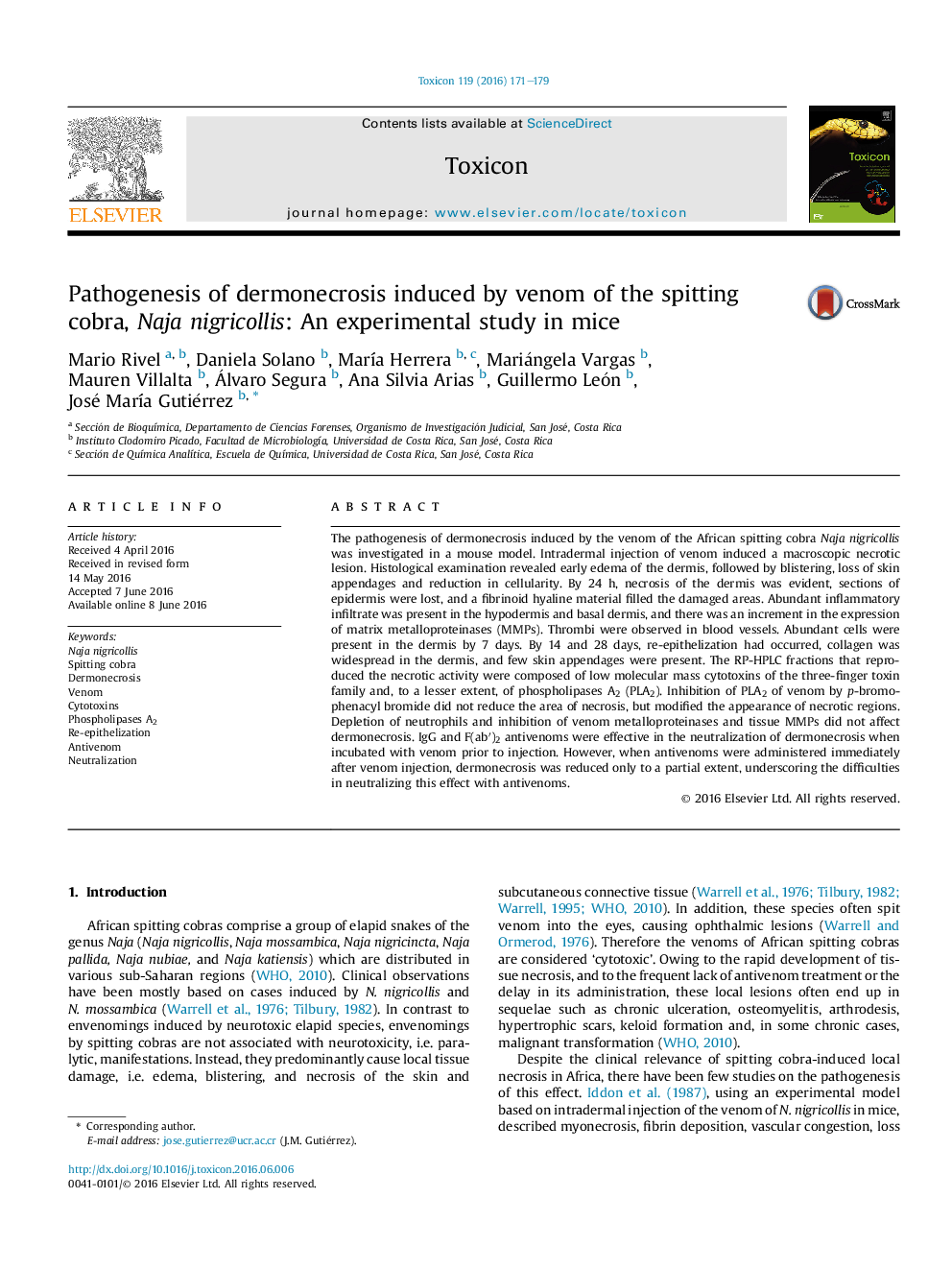| Article ID | Journal | Published Year | Pages | File Type |
|---|---|---|---|---|
| 2064006 | Toxicon | 2016 | 9 Pages |
•The pathogenesis of dermonecrosis induced by Naja nigricollis venom was studied.•Venom induces edema, blistering and necrosis of dermis and epidermis.•Cytotoxins of the three-finger toxin family are the main responsible of the effect.•Phospholipases A2 play also a role in tissue damage.•Antivenoms are ineffective when administered after venom injection.
The pathogenesis of dermonecrosis induced by the venom of the African spitting cobra Naja nigricollis was investigated in a mouse model. Intradermal injection of venom induced a macroscopic necrotic lesion. Histological examination revealed early edema of the dermis, followed by blistering, loss of skin appendages and reduction in cellularity. By 24 h, necrosis of the dermis was evident, sections of epidermis were lost, and a fibrinoid hyaline material filled the damaged areas. Abundant inflammatory infiltrate was present in the hypodermis and basal dermis, and there was an increment in the expression of matrix metalloproteinases (MMPs). Thrombi were observed in blood vessels. Abundant cells were present in the dermis by 7 days. By 14 and 28 days, re-epithelization had occurred, collagen was widespread in the dermis, and few skin appendages were present. The RP-HPLC fractions that reproduced the necrotic activity were composed of low molecular mass cytotoxins of the three-finger toxin family and, to a lesser extent, of phospholipases A2 (PLA2). Inhibition of PLA2 of venom by p-bromophenacyl bromide did not reduce the area of necrosis, but modified the appearance of necrotic regions. Depletion of neutrophils and inhibition of venom metalloproteinases and tissue MMPs did not affect dermonecrosis. IgG and F(ab′)2 antivenoms were effective in the neutralization of dermonecrosis when incubated with venom prior to injection. However, when antivenoms were administered immediately after venom injection, dermonecrosis was reduced only to a partial extent, underscoring the difficulties in neutralizing this effect with antivenoms.
Graphical abstractFigure optionsDownload full-size imageDownload as PowerPoint slide
